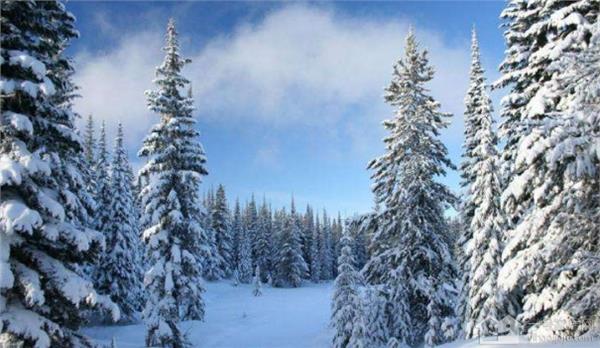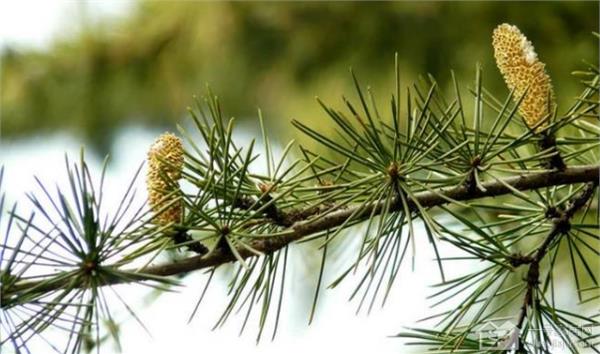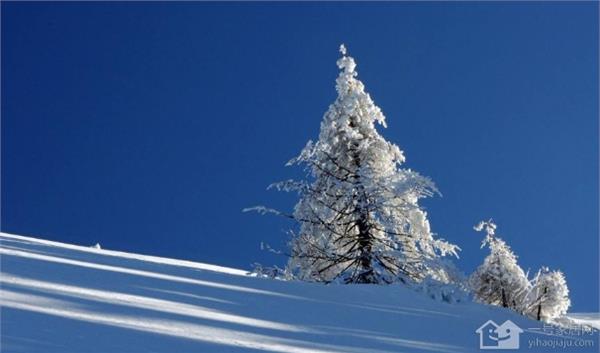Stand alone and stand upright-- the culture method of cedar
When it comes to cedar, it is a world-famous garden ornamental tree species. It is a position with its own environmental protection, it can prevent dust, reduce noise and sterilize, and it is also more suitable for planting in industrial and mining enterprises. But very few people are familiar with its culture method. Today, let's get to know the culture method of cedar.

1. The best propagation time: sowing can be carried out in the middle and late March, and cuttage propagation can be carried out in both spring and summer.
Second, the best growing soil: Cedar is suitable for growing in neutral or slightly acidic soil with deep soil layer and good drainage.
Third, growth humidity requirements: Cedar likes cool and humid climate
4. The optimum growth temperature: the cedar has strong cold resistance, and the large seedlings can withstand a short-term low temperature of-25 ℃.
Fifth, the best growth light: Cedar prefers light, and is slightly resistant to shade when young. Big trees need plenty of light from above, otherwise they will grow poorly or wither.

6. Points for attention in culturing cedar:
1. Spread fertilizer:
Cedar is suitable to use fermented manure and cake fertilizer, and family fertilizer is mainly cake fertilizer. The suitable fertilization time is from April to May, pay attention to the fertilizer and water should not be too thick, the frequency should not be too much, apply 2 to 3 times a year.
2. Watering key points:
Cedar has a certain drought resistance, afraid of water stains, basin soil should be kept moist as well, wait until the basin soil is dry before watering, watering is thoroughly. In case of rain for a long time, we should pay attention to the basin can not be stagnant water, can be inclined to pour the basin to facilitate drainage, the basin will be restored in time after the rain stops.
3. Pruning essentials:
Cedar pruning can be carried out during the winter dormancy period, cutting off overlapping branches, cross branches, dead branches and long branches. Cedar needles grow in clusters at the top of short branches. During the growth period, the overlong branches can be pruned at any time, and the direct branchlets on the lateral branches can be coring, so that more short branches and clustered needles can germinate, and the thickness of the cloud sheet can be increased to maintain a certain tree shape.
4. Replacement of basin soil:
The cedar should turn the basin every 3-4 years, and it is better to do it before sprouting in March-April in spring. When turning the basin, remove the old soil 1B2 or so, cut off the rotten roots, replace it with loose and fertile culture soil, cover it with moss and water it, put it in the shade for half a month, and then take the basin.
5. Main points of reproduction:
Cedar is usually propagated by sowing and cutting.
Sowing: can be carried out in mid-late March, with a sowing rate of 75 kg / ha. It can also be sowed early to increase the disease resistance of seedlings. The sandy loam with good drainage and ventilation was selected as the seedbed.
Before sowing, soak the seeds in cold water for 2 days. After drying, the seeds can be sown, and the seeds begin to germinate after 5 days, which can last for about 1 month, and the germination rate is up to 90%. In the seedling stage, we should pay attention to shading, and prevent and cure the disease and the harm of ground tiger. One-year-old seedlings can reach 30m / m high and can be transplanted in spring of the following year.
Cuttings: cuttings can be propagated in both spring and summer. It should be before March 20 in spring and late July in summer.
In spring, one-year-old stout branches of young mother trees were cut and treated with rooting powder or 500 mg / L naphthylacetic acid, which could promote rooting. Then insert it into the well-breathable sandy soil, fully water it, and build a double-layer shade shed for shade. In summer, it is appropriate to select the semi-woody branches of the same year as cuttings. In addition to strengthening shading, the management should also be covered with plastic film to maintain humidity. 50 days after insertion, callus can be formed, and 0.2% urea and 0.1% potassium dihydrogen phosphate solution can be used for extra-root fertilization.
The propagated seedlings can be transplanted after leaving them in bed for 1-2 years. Transplantation can be carried out from February to March. The plant needs to carry a soil ball and set up a support pole. The plant row spacing increased gradually from 50 to 200 square meters. Topdressing 2-3 times during the growing period, there is generally no need for shaping and pruning, but only to remove the diseased and withered branches and the shady weak branches where the crown is tightly forbidden by ☆ and ☆. It can be sprayed with benzoate or Dysen zinc to control Botrytis cinerea, omethoate and trichlorfon to control scale and moth and butterfly pests.
Sexual soil can adapt and grow in heavy loess and barren and dry land, but in stagnant water depression or high groundwater level, it will grow poorly, even die, and it is a shallow root tree species. Easily blown down by the wind. Young leaves are very sensitive to sulfur dioxide and their resistance to tobacco damage is very weak. The young seedlings grow slowly. Usually the male plant blossoms after 20 years old, while the female plant blossoms and seeds only after 30 years old. Due to different florescence, the effect of natural pollination is poor. It is usually necessary to collect and store pollen in advance and carry out artificial pollination when the female flower is mature in order to obtain more high-quality seeds. It is generally propagated by sowing or cutting. Sowing can be carried out in late March, with a sowing rate of about 5 kilograms per mu. About 15 days sprouting unearthed. The seedlings need to be sheltered in a shed.
If the base of cuttings was soaked with naphthalene acetic acid of 500PPm for 5 minutes, it could promote rooting. After insertion, 1-2 layers of shade sheds should be set up and covered with plastic film to strictly shade. About 30-50 leaves formed callus after insertion. At this time, external fertilization can be carried out with 0.2% urea solution and 0.1% potassium dihydrogen phosphate solution. The propagated seedlings can be transplanted after 1-2 years. The transplant leaves should be carried out from February to March, and the plant should carry a ball and stand up a pole. The plant-row spacing of the first transplantation is about 50 cm, and the plant-row spacing of the second transplantation should be expanded to 1-2 meters. 2-3 times of topdressing should be applied during the growing period. It is easy to be harmed by diseases and insect pests at seedling stage, especially sudden disease and ground tiger. Other pests include grub, big bag moth, pine poison moth, pine tip borer, red wax scale, termites and so on, which should be controlled in time.

7. Pest control:
1. Prevention and control of gray mold.
Botrytis cinerea mainly harms current-year-old shoots and biennial twigs of cedar. It can be strictly divided into the following types:
The main results are as follows: 1) the withered shoot type mainly occurs on the tender shoot, and the initial symptom is the same as the ulcer type, but it is difficult to form healing tissue when the diseased part is watery rot, and when the diseased part reaches more than 2 × 3 of the perimeter of the tender shoot, the tender shoot bends, wilts and dies from the diseased part. The disease develops rapidly, from the appearance of symptoms to the death of tender shoots, it only takes 4 to 5 days. The disease department will grow a layer of gray mold on rainy days.
2) ulcerative type: mainly harms the tender shoots of cedar. At the initial stage, light brown round and near-round irregular spots were produced at the base of the tender shoot, and then gradually expanded into a large concave spot in the middle, and showed dark brown water-stained rot at the initial stage of the depression. After recovering from the disease, the original decaying epidermis is dry and cracked.
3) the withered type of branchlets mainly occurs on biennial branchlets. The disease spot mainly spreads from the tender shoots where the disease is dead. At the initial stage, a reddish-brown depression was formed at the junction of withered shoots and branchlets, and then obvious disease spots were gradually formed, the disease spots did not crack, a small amount of resin spilled, and the surface layer of cortex and xylem was dark brown. After the disease spot extended to the branchlet for a week, the upper part of the branchlet died. The occurrence and prevalence of the disease are closely related to climatic conditions.
Prevention and control methods:
1) Cedar should be planted in places with good drainage, ventilation and light, and should not be too dense.
2) the dead shoots should be cut off and destroyed in time.
3) during the onset period, 65% Dysen zinc wettable powder 1000 times, 45% Dysenamine water 1000 times, 50% benzoate wettable powder 1000 times, 70% methyl topiramate wettable powder 1500 times, and so on.
2. Blight control
After the pathogen of cedar leaf blight overwintered by mycelium (or ascomycete), the ascus disk was formed in March-April of the following year, and the apothecium matured one after another in April-May; under the condition of rain or tide, the factor sac disk swelled by water and opened, revealing milky ascus group; the ascus robe was extruded from the ascus and further spread by gas. The pathogen invaded by the stomata of cedar leaves, and it took about two months to show obvious symptoms. Because the germination ability of the meristematic embryoid produced in the meristematic embracing apparatus is very poor and has no infectivity, there is no further infection. However, the radiation time of factor buns is very long, about 3 months, and new infections may occur from spring to summer. During the period when the daughter bag is scattered, if the precipitation is large and the humidity is high, it is beneficial to invade. Dry woodland, thin soil, cedar suffering from diseases and insect pests and poor management may promote the occurrence of diseases.
Pollution-free prevention and control measures:
The main results are as follows: 1) strengthen tending management to make cedar grow vigorously and enhance disease resistance.
2) for small area plantation, cedar nursery and other conditional places, the diseased leaves should be removed before the ascomycetes are scattered, so as to reduce the source of infection.
3) spray 1: 2: 200 Bordeaux solution, 0.3-0.5 Baomedusite-sulfur mixture or 25% temperable carbendazim 400-500 times, or 65% wettable 8-fold solution for 2-3 times during maturation, each time at intervals of 10-15 days.
7. Pest control:
1. Prevention and control of gray mold.
Botrytis cinerea mainly harms current-year-old shoots and biennial twigs of cedar. It can be strictly divided into the following types:
The main results are as follows: 1) the withered shoot type mainly occurs on the tender shoot, and the initial symptom is the same as the ulcer type, but it is difficult to form healing tissue when the diseased part is watery rot, and when the diseased part reaches more than 2 × 3 of the perimeter of the tender shoot, the tender shoot bends, wilts and dies from the diseased part. The disease develops rapidly, from the appearance of symptoms to the death of tender shoots, it only takes 4 to 5 days. The disease department will grow a layer of gray mold on rainy days.
2) ulcerative type: mainly harms the tender shoots of cedar. At the initial stage, light brown round and near-round irregular spots were produced at the base of the tender shoot, and then gradually expanded into a large concave spot in the middle, and showed dark brown water-stained rot at the initial stage of the depression. After recovering from the disease, the original decaying epidermis is dry and cracked.
3) the withered type of branchlets mainly occurs on biennial branchlets. The disease spot mainly spreads from the tender shoots where the disease is dead. At the initial stage, a reddish-brown depression was formed at the junction of withered shoots and branchlets, and then obvious disease spots were gradually formed, the disease spots did not crack, a small amount of resin spilled, and the surface layer of cortex and xylem was dark brown. After the disease spot extended to the branchlet for a week, the upper part of the branchlet died. The occurrence and prevalence of the disease are closely related to climatic conditions.
Prevention and control methods:
1) Cedar should be planted in places with good drainage, ventilation and light, and should not be too dense.
2) the dead shoots should be cut off and destroyed in time.
3) during the onset period, 65% Dysen zinc wettable powder 1000 times, 45% Dysenamine water 1000 times, 50% benzoate wettable powder 1000 times, 70% methyl topiramate wettable powder 1500 times, and so on.
2. Blight control
After the pathogen of cedar leaf blight overwintered by mycelium (or ascomycete), the ascus disk was formed in March-April of the following year, and the apothecium matured one after another in April-May; under the condition of rain or tide, the factor sac disk swelled and opened, exposing milky ascomycetes; the ascus robe was extruded from the ascus and further spread by gas. The pathogen invaded by the stomata of cedar leaves, and it took about two months to show obvious symptoms. Because the germination ability of the meristematic embryoid produced in the meristematic embracing apparatus is very poor and has no infectivity, there is no further infection. However, the radiation time of factor buns is very long, about 3 months, and new infections may occur from spring to summer. During the period when the daughter bag is scattered, if the precipitation is large and the humidity is high, it is beneficial to invade. Dry woodland, thin soil, cedar suffering from diseases and insect pests and poor management may promote the occurrence of diseases.
Pollution-free prevention and control measures:
The main results are as follows: 1) strengthen tending management to make cedar grow vigorously and enhance disease resistance.
2) for small area plantation, cedar nursery and other conditional places, the diseased leaves should be removed before the ascomycetes are scattered, so as to reduce the source of infection.
3) spray 1: 2: 200 Bordeaux solution, 0.3-0.5 Baomedusite-sulfur mixture or 25% temperable carbendazim 400-500 times, or 65% wettable 8-fold solution for 2-3 times during maturation, each time at intervals of 10-15 days.
Related
- Wuhan Hospital Iron Tree Blooming Result Was Instantly Frightened by the Gardener Master
- Which variety of camellia is the most fragrant and best? Which one do you like best?
- What is the small blue coat, the breeding methods and matters needing attention of the succulent plant
- Dormancy time and maintenance management of succulent plants during dormancy
- Minas succulent how to raise, Minas succulent plant pictures
- What are the varieties of winter succulent plants
- How to raise succulent plants in twelve rolls? let's take a look at some experience of breeding twelve rolls.
- Attention should be paid to water control for succulent plants during dormant period (winter and summer)
- Watering experience of twelve rolls of succulent plants
- Techniques for fertilizing succulent plants. An article will let you know how to fertilize succulent plants.



